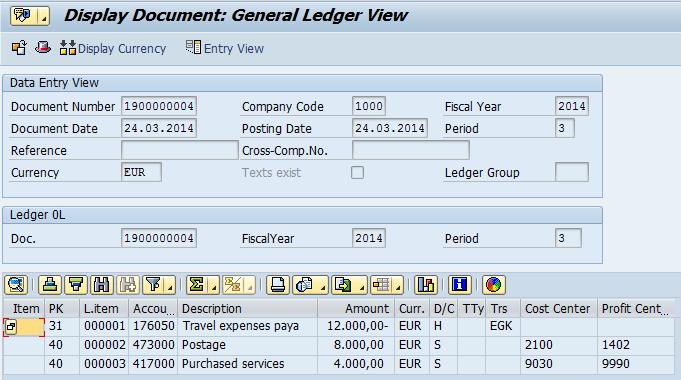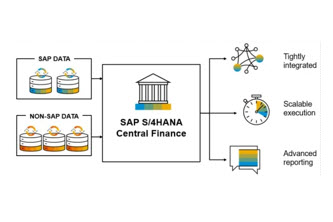5 New SAP Skills You Could Learn This Week
by Michael Management
 Are you an enterprising, driven, and career-motivated individual looking to take your career in a lucrative and powerful direction?
Are you an enterprising, driven, and career-motivated individual looking to take your career in a lucrative and powerful direction?
SAP skills provide that opportunity in spades, regardless of the specialty that you feel called to adopt.
In this post, you’ll find 5 new SAP skills that you can learn as a beginner so that you can embark on the next major phase of your career — as an SAP specialist.
1. Using the SAP Graphical User Interface (GUI)
The SAP GUI is the way in which the software presents information and allows a user to interact with the functionality.
As a result, the GUI is the foundation of all other elements of SAP. To take advantage of the more advanced features of SAP, it’s imperative that you learn about the way those features are presented, how you can use them, and how they operate.
The SAP GUI is designed to be as user-friendly as possible, but it can still take some time for newcomers to learn the essentials. That’s why many SAP resources, including Michael Management, take the time to mention the GUI specifically.
Once you understand the GUI, its structure, and the philosophy behind it, you can move onto the next most important element of SAP usage.
2. Navigating the SAP Menu Tree
The SAP menu tree is designed to be as intuitive and simple as possible, just like the GUI. However, also like the GUI, it takes time and practice to make the most of it.
Conceptually, the menu tree operates on a similar philosophy to other software suites you may use, like Microsoft Office. Different headings provide different options for you to perform different tasks.
These headings and options are designed according to a “filing cabinet” structure, where a menu’s overarching name then leads to specific options, which could themselves have even more detailed selections.
If you’ve used a menu navigation tree in other software, you’ll probably catch on to this concept relatively quickly. The only trick is learning the specifics of SAP’s options so that you can find what you want quickly.
3. Searching in SAP
Because SAP is so large and robust, it has multiple ways for users to discover and use different parts of its software.
This includes a search function that you can use in addition to navigating the SAP menu tree. Search lets you query the back-end database of SAP to find the different features that you want to use for any given project.
Understanding the nomenclature (and even the back-end power of the SAP search engine itself) can be a gamechanger when it comes to quickly and easily finding the SAP features that you need to succeed in a project.
4. Basic Reporting
Reporting is a cornerstone function of SAP. It’s the ability to take unstructured data, present it in an understandable way, and analyze it so that a company can make informed and actionable decisions.
As a result, reporting plays a major role in nearly every SAP specialization because it shows elements of change, whether they be positive or negative.
Whether you enter a company in an entry-level position or take on a managerial role, the ability to run reports in SAP will almost certainly be a part of your everyday work. When you understand how to use it, you can work through complex data sets much more quickly and efficiently.
5. Running Reports
While basic reporting is a fundamental skill that nearly everyone needs to learn in SAP, running reports themselves is a different ballgame.
Running reports deals with using different sets of queries, data, and visualizations to ensure that you get the proper inputs and outputs that you need for a certain project.
Running reports can be a simple or complex ordeal, depending on the needs of the project on which you’re currently working.
They may be simple when you only have to compare a single data set to something like a timeline.
They may get more complex when you have to show revenues, percentages, and dates for a visualization.
In addition, you may find yourself running reports for a variety of reasons or opportunities. You may need to run a report to double-check something in your day-to-day work. You may also need to run a report to show progress in a certain area to the CEO of your company.
Understanding these different queries, visualizations, and data options (among other elements) makes you faster, more accurate, and more proficient in running reports themselves.
Are You Ready to Learn Your New SAP Skills?
If you find yourself interested in the challenging and rewarding work that an SAP specialty could provide, then it’s imperative that you start with the fundamentals so that you can work your way up to a full-fledged SAP expert.
In that way, taking the time to learn the basics of SAP software can play a vital role in the growth of your professional and personal skill sets.
To get started, click here to jump into our hands-on simulation course for basic SAP skills.
by Michael Management
More Blogs by Michael Management

Unlock Financial Precision: The Critical Role of...
Mastering Document Splitting in SAP Central Finance: Essential Ins...

Unlocking Success: The Strategic Imperative of Group...
Why is Group Reporting Critical for SAP Central Finance? Masterin...

Kickstart Your Career: Mastering SAP Inventory...
SAP inventory management is an in-demand skill set from large companie...
Related Blogs

What Are the Best SAP Skills?
SAP is one of the world leaders in enterprise business software, cover...

How Much Do SAP Consultants Make?
SAP is one of the world’s leading enterprise software suites tha...

How To Ask Your Boss To Keep Working From Home
You work from home 5 days a week, but your boss wants you to return to the...
.png)

